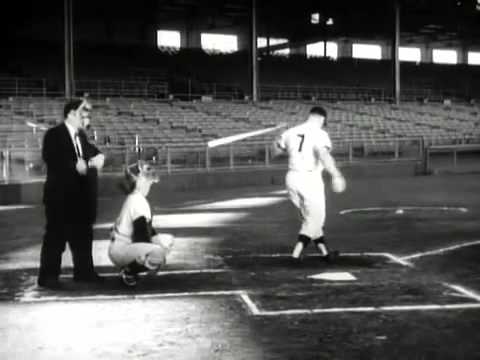Jesus. You don’t need to watch a 3.5 hours film to get cricket.
There are many finesses and intricacies but the basics of cricket are
2 teams of 11
Team A bats and score as many runs as possible while Team B bowls and fields, trying to get Team A batters out/restrict their runs
Batters bat in pairs so when 10 Team A batters are out Team A’s innings is over and Team B bats while Team A bowls/fields
Team B bowls at Team A with each of their bowlers bowling in batches of 6 balls (“an over”) before play switches to the opposing end with a different Team B bowler bowling at whichever of Team A’s 2 current batters is at the end facing him
A run is defined as batters completing the trip to the opposite wicket, crossing in the middle, except when the ball reaches the boundary, when it counts as 4 runs if it touches the ground first or 6 if it doesn’t and there’s no need for them to actually run
If the batters attempt too many runs of a single delivery (“ball”) the fielders are likely to “run out” one of the batters, and end his innings, but breaking the wicket at his end before he makes it there. Otherwise there’s no limit on the number of runs possible from a single ball
Bowlers must bowl in a smooth motion with the arm above their head and more or less straight at the elbow (to discourage throwing)
If a bowler bowls too wide of the wicket he is penalised a run which goes to Team As total as an “extra”; ditto if he oversteps the mark (the “crease”) when bowling
If a batter tries to hit the ball and misses, they can run anyway (fielders permitting) and again it counts as extras (“leg byes” if it comes off the batter’s pad, “byes” otherwise)
Batters can be given out any of the following means, but an appeal must first be made by Team B to the umpire (“how’s that?”)
Bowled - ball hits batter’s wicket and wood on top (“bail”) falls to the ground, even if the ball hit something else first
Caught - ball hits batter’s bat, glove or helmet and is caught without bouncing by a fielder
Leg Before Wicket (“LBW”) - tricky but the basic idea is to prevent a batter from protecting his wicket with his pads, so if the umpire decides the batter would have been out bowled if the ball hadn’t hit has pads he is out if certain criteria are met
Run Out - batter attempts a run but fails to make his ground before a fielder has thrown (or kicked lol) the ball into his wicket
Stumped - similar to Run Out but batter mises the ball and the wicket keeper (fielder behind the wicket) collects the ball and throws (or kicks) the ball to break the wicket at the moment the batter is out of his crease (ie too far forward)
Hit Wicket - batter accidentally breaks his wicket himself
and a few very rare ones such as Handled The Ball, Obstructed The Field and Hit The Ball Twice
The two forms of the game are limited overs, and Test cricket
Limited over cricket is what is says typically each side bowls 50 overs at the other and the side with the most total runs wins. If a team is out before their 50 overs, that’s the end of their innings.
Test cricket is far more nuanced because each team bats (and therefore fields) twice, with their aggregate runs counting, and the game can take up to 5 days.
To win a Test match one side must have scored more runs than the other team’s 2 innings aggregate, so therefore they must bowl the other team out twice ie take 20 wickets.
Sometimes Team A is so dominant that they bat first and score so many runs that Team B are unable to get within 200 of the target, when Team A has the option of not batting again, but bowling, and if they dismiss Team B before they reach Team A’s aggregate runs TEAm A is deemed to have won by an innings (a crushing and demoralising defeat).
Often (and this is the bit that really gets Americans, who insist on decisive results despite evenly matched performances lol) neither team is able to take 20 wickets within the 5 days limit, and the match is declared a draw.
Very, very occasionally a match ends in a tie when the team batting last is all out when the scores are level.

